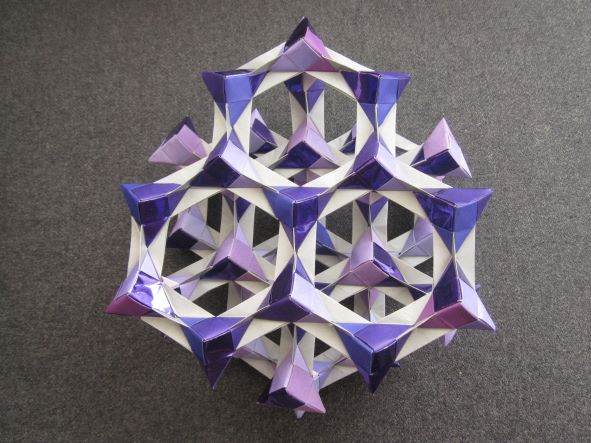
Purple Graphite, Based on the “growing polyhedra” schemata in Tomoko Fuse’s Unit Origami
Today’s model is an example of what Tomoko Fuse called “growing polyhedra”. Fuse basically provides a construction kit–designs for triangular double-pyramids and connectors. These components can be put together in any number of ways. I decided to create three layers of hexagons following the crystal structure of graphite–specifically the “ABC” allotrope. This model is quite large, about 8 inches across–and very sturdy too.
Here’s a calculation of the number of pieces of paper. There are 13, 12, and 13 double-pyramids in each respective layer; 15, 12, and 15 horizontal connectors; 6 and 6 vertical connectors. The double-pyramids each have 3 sheets of paper; the horizontal connectors have 4; and the vertical connectors have 3. That’s (13+12+13)*3 + (15+12+15)*4 + (6+6)*3 = 318. For what it’s worth, I usually chop up each square into smaller squares first. But it definitely took a long time to put this together.
There is an analogy between music and origami. An origami recipe is the composition, origami diagrams are the “score”, and the origami model is the performance. Following this analogy, Tomoko Fuse’s growing polyhedra are like jazz–a framework is provided, but you have a lot of freedom within that framework to personalize your performance.
…
Origamists in the SF Bay area: I will be at the East Bay Origami Convention on March 19th! Not that I’ll be teaching a class or anything, I’ll just be in attendance. And I’ll bring this model.

I love this one. It reminds me of a toy I was given that had flexible plastic rectngles with in or out connectors in alternate corners, You could make wonderful shapes with it, but it was strong enough to withstand being thrown around or even sat on. Well until my dad nicked it all that is.